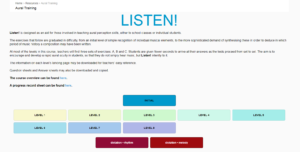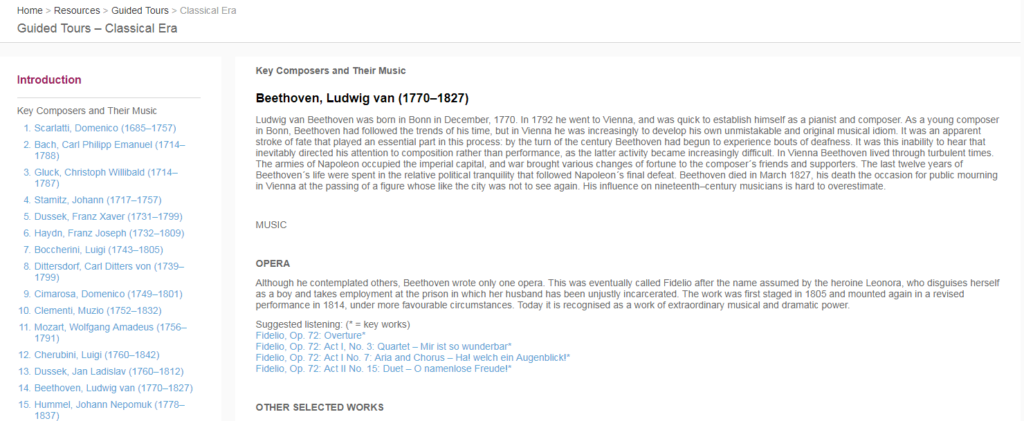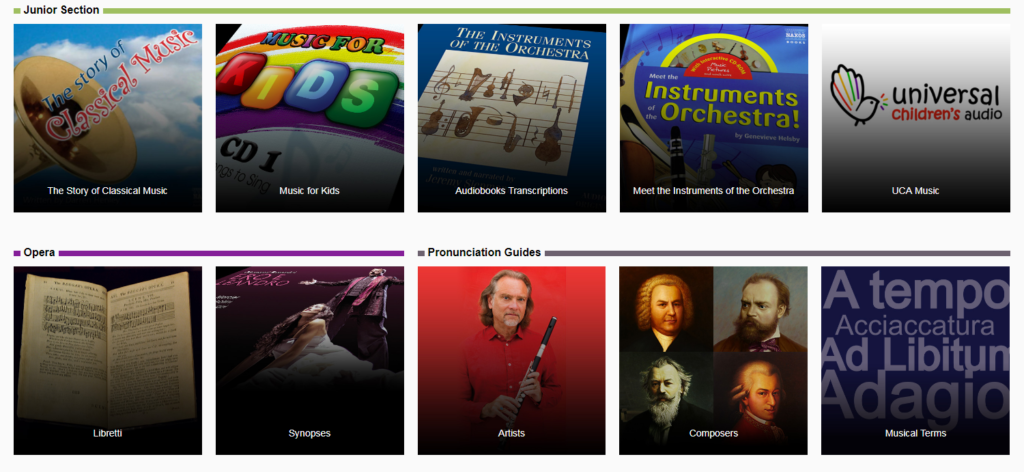Library News
Naxos Music Library: Resources
Posted on November 5th, 2019
In continuation of the Naxos Music Library article, there are other expanded tabs that hold a lot of useful information. The Resource tab is very useful for both the everyday listener or to the music major. It has numerous resources available including practical ones like a music dictionary, aural training, and analyses of works.
The music dictionary is a great tool to use. Most definitions have an audio example of what is being defined in addition to the meaning of the word. This can be very helpful if someone is reading music and does not understand what something means. It is also nice for the average listener who wants to know more about the technical side of music.
Aural training is very helpful to train and develop your ear to become a better listener to music and understand what is going on in different recordings. This tab is easy to use and accessible for many. There are eight different levels of training that each have their own questions regarding different recordings and answers to check your work (below). The music knowledge differs from level to level. It is helpful for anyone who wants to develop a better listening ear.
Work analyses are selected works from different composers and breaking them down and analyzing them. So far, there are nearly 30 composers who have had some works analyzed. Each article goes into detail as to what the composers was attempting to accomplish and what the music is saying. These analyses are helpful to people who want to know more about certain works by some composers, or are doing research on a music analysis.
Guided Tours is another feature of the resources for the Naxos Music Library (above). These are guides of the different classical eras like Baroque, Classical, Romantic, Nationalism in the Romantic era, and 20th Century. They take you through different composers of the era and briefly describe them while showing selected, notable works. This can be helpful for people who may be unfamiliar with classical music and wish to go deeper into different styles.
The study guide section of the Naxos Music Library is for students from all over the world that more or less coincide with their curricula about music theory and history (below). The curricula are from six different countries. In the United States, it follows the k-12 system, while other countries follow their standard curriculum. This would help student teachers prepare for teaching kids about music from ages 5-18.
There are other interesting sections in the Resource tab as well (all below), like the junior section. The junior section has resources like learning what different instruments are, music for kids, etc. Another option is looking at different synopses and the libretti of an opera, which is the text of what is spoken. There are other helpful tools, like the pronounciation guides for artists, composers, and musical terms. Finally, the ABRSM, OMEA, and Trinity/Guildhall Music exams also have study guides on Naxos. Overall, Naxos Music Library has a lot of information and a lot resources available for all types of students.








